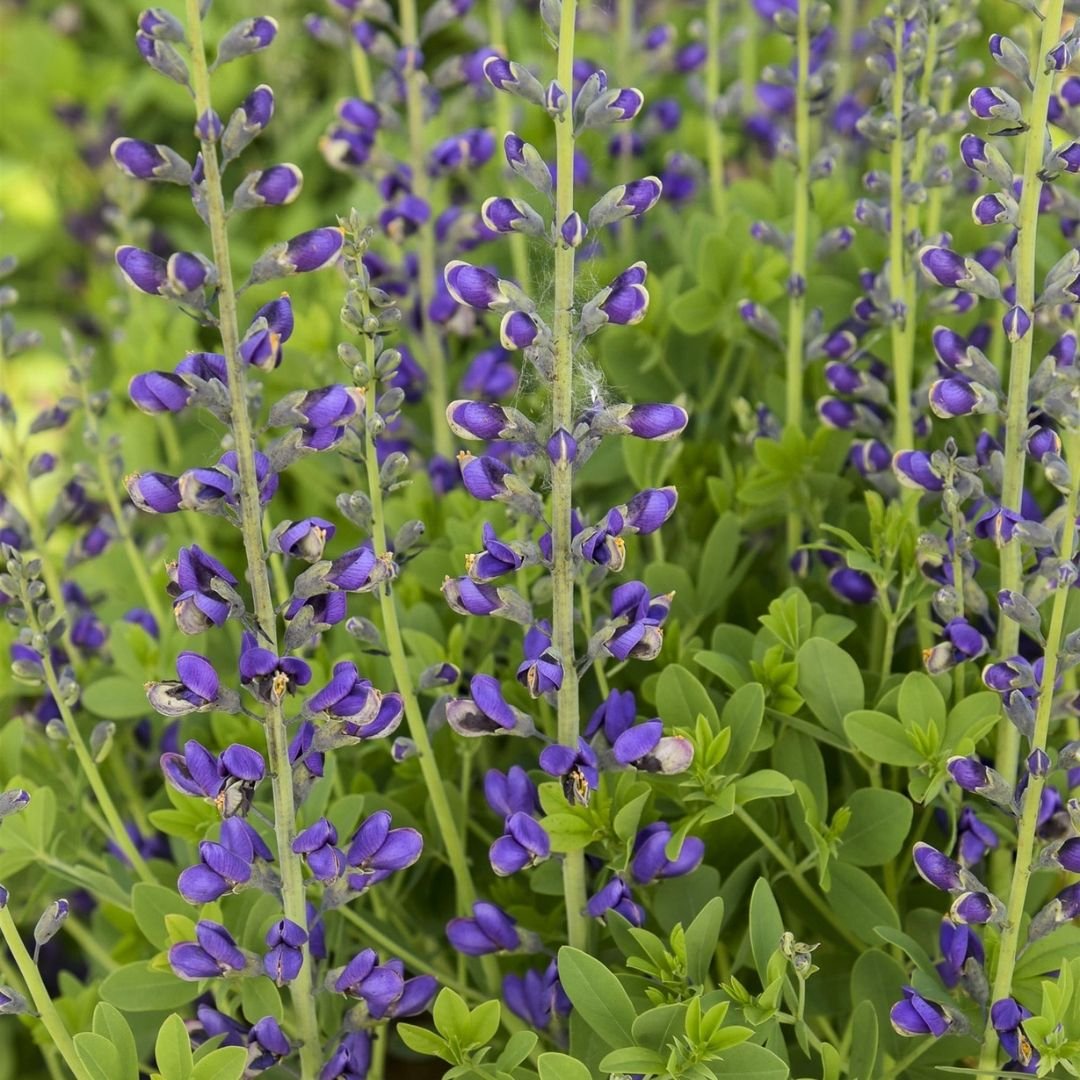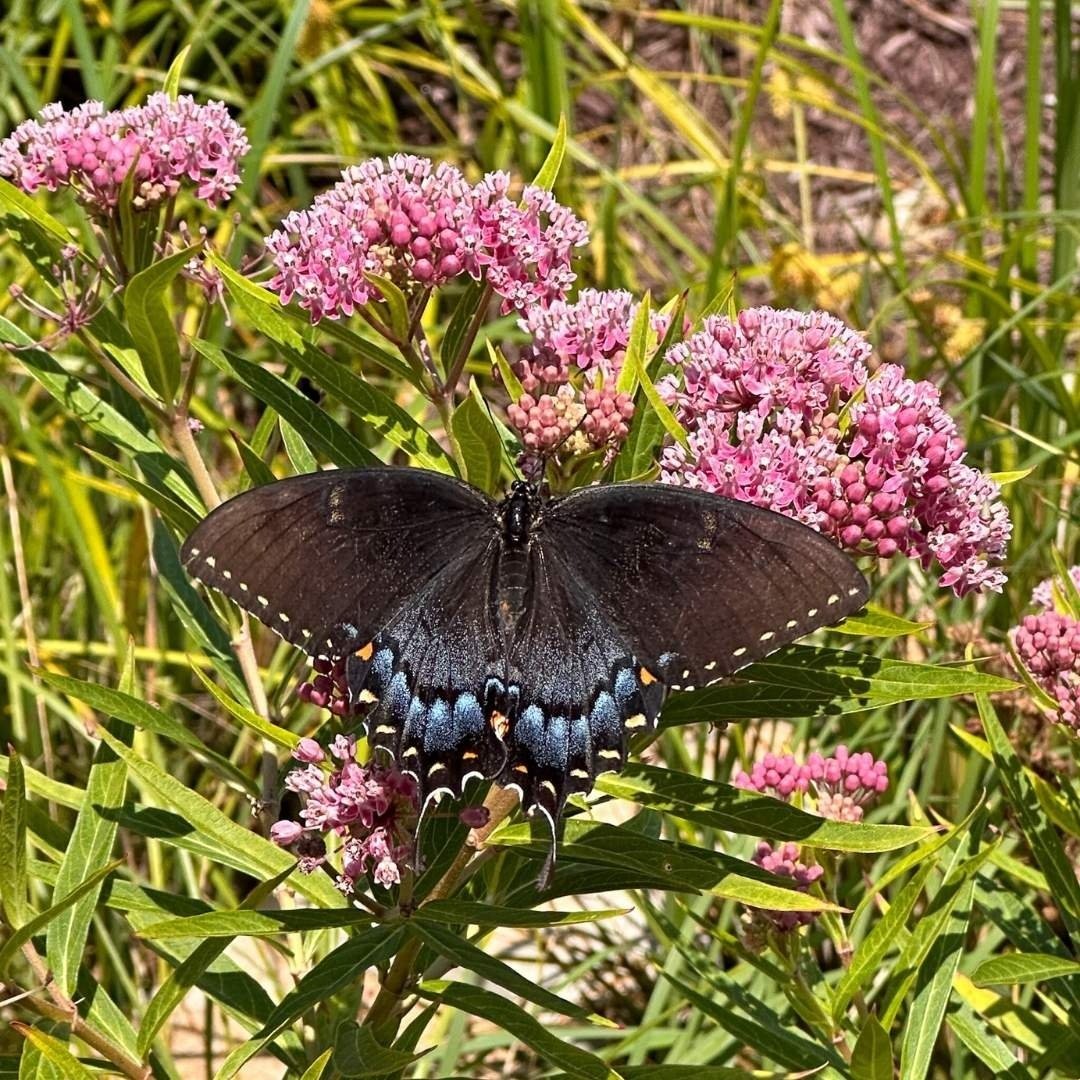10 Best Butterfly Nectar Plants
Nature’s Butterfly Food
These Butterfly Garden Favorites Will Set Your Garden A-flutter!
Butterflies are more than just beautiful visitors—they’re essential pollinators that bring life and motion to your garden. If you’re dreaming of a vibrant outdoor butterfly garden brimming with fluttering wings, the secret lies in the plants you choose.
In this guide, we’ll explore the 10 best butterfly nectar plants that not only attract these delicate creatures but also provide nectar, the butterfly food they need to thrive. From colorful perennials to hardy shrubs, these picks will turn your garden into a butterfly haven!
What Are Butterfly Nectar Plants?
Butterfly nectar plants are flowering plants that produce a sweet, carbohydrate-rich liquid called nectar, which serves as a vital energy source for butterflies.
These plants play a crucial role in supporting the life cycle of butterflies by offering the nourishment needed for their activities.
Butterflies are remarkably energetic insects, spending much of their time flying, feeding, and engaging in essential pursuits like mating and laying eggs.
This high level of activity demands a steady supply of energy, which they derive from the nectar found in certain flowers. Rich in sugars and essential nutrients, nectar acts as a quick energy boost that helps butterflies sustain their flight and other daily functions.
Beyond their practical benefits, nectar plants also contribute to the visual appeal of your garden. By including a variety of nectar plants in your butterfly garden layout, you not only support the butterfly population but also create a lively, colorful space teeming with natural life.
Let’s take a look at 10 of the best butterfly garden nectar plants that will bring these winged beauties to your yard…
This article contains affiliate links, which means I may earn a small commission at no extra cost to you. These commissions help me to continue bringing you free, high-quality design articles. Thank you for your support!
Summersweet
Clethra alnifolia
Type: Shrub
Zones: 3 - 9
Light requirements: Full sun to partial shade
Size: 3 - 8 feet high and wide with smaller varieties available
Bloom time: Mid-summer to late summer
A swallowtail butterfly sips nectar from the flowers a summersweet shrub (Clethra alnifolia).
Summersweet (Clethra alnifolia) is an exceptional butterfly nectar plant, known for its fragrant, nectar-rich blooms that draw butterflies in droves.
One of its standout qualities is its ability to flower even in shaded areas, making it a versatile choice for gardens with limited sunlight.
This plant thrives in wet soil, making it ideal for rain gardens or the naturally damp spots in your landscape.
While summersweet can grow quite large, reaching up to 8 feet in height, gardeners seeking a more compact option can opt for smaller cultivars.
Petite varieties like ‘Hummingbird’ or ‘Sugartina Crystallina deliver the same beautiful blooms and butterfly appeal, perfect for smaller spaces or container gardening. ‘Ruby Spice’ has bright pink flowers that butterflies flock to.
With so many sizes and colors to choose from, summersweet is the perfect low-maintenance, easy butterfly nectar plant for any garden or yard.
2. Glossy Abelia
Abelia x grandiflora
Type: Shrub
Zones: 6 - 9
Light requirements: Full sun to partial shade - flowers best in full sun
Size: 3 - 6 feet high and wide with smaller varieties available
Bloom time: Late spring through fall
The soft pink, funnel-shaped flowers of glossy abelia (Abelia x grandiflora).
Glossy abelia (Abelia x grandiflora) is a wonderful source of butterfly food, thanks to its fragrant, nectar-rich blooms and an impressively long blooming season that stretches from late spring through fall.
This easy-to-grow shrub is semi-evergreen, offering year-round visual interest, and its naturally structured look makes it a versatile choice for foundation plantings or mixed borders.
While the original hybrid species (Abelia x grandiflora) can grow quite large, gardeners can now choose from several smaller varieties, some of which feature unique leaf colors and variegations for added beauty.
‘Rose Creek’ has purple-green foliage and stays under 4 feet tall, and ‘Kaleidoscope’ grows up to 3.5 feet tall and has variegated leaves.
With its extended bloom time and low-maintenance nature, glossy abelia is a reliable and attractive option for feeding butterflies and enhancing your garden.
3. Temple of Bloom® Seven-Son Flower
Heptacodium miconioides
Type: Small tree
Zones: 5 - 9
Light requirements: Full sun to partial shade
Size: 15-20 feet high and 6-10 feet wide
Bloom time: Summer through fall
Seven Son Flower (Heptacodium miconioides) is a favorite nectar plants of monarch butterflies. Photo courtesy of Proven Winners - provenwinners.com
The Temple of Bloom seven-son flower (Heptacodium miconioides) is an absolute butterfly magnet and a favorite of monarchs and bees, offering an irresistible source of nectar during critical times of the year.
Introduced in 2019, this incredible plant is still underused despite its stunning appeal. It boasts four seasons of interest: fragrant late-summer blooms that butterflies and bees flock to, decorative red sepals in autumn, textured bark in winter, and lush green foliage in spring.
Perfect for small yards, this well-behaved and low-maintenance alternative to crape myrtles provides essential butterfly food during the monarch butterfly migration season when other nectar sources are scarce.
Add Temple of Bloom to your landscape, and you'll create a vibrant, pollinator-friendly oasis that’s as beautiful as it is beneficial.
4. Buttonbush
Cephalanthus occidentalis
Type: Shrub
Zones: 5 - 9
Light requirements: Full sun to partial shade - flowers best in full sun
Size: 5-12 feet tall and 4-8 feet wide with smaller varieties available
Bloom time: Summer
Butterflies love the globe-shaped flowers of buttonbush (Cephalanthus occidentalis).
Buttonbush (Cephalanthus occidentalis) is a native gem of North America’s swamps and bogs, beloved by butterflies for its nectar rich globe-shaped white flowers that bloom in summer.
The straight species can grow quite large and sprawling, making it ideal for filling up a wet corner of your backyard. For smaller spaces, more compact varieties like ‘Sugar Shack’ offer the same charm in a manageable size.
Buttonbush thrives in consistently wet soil, so it’s perfect for planting alongside a pond, creek, or rain garden. Be sure to site it carefully, as it struggles in hot, dry areas like hellstrips near concrete driveways and sidewalks.
With the right location and a little extra watering, buttonbush will reward you with beauty and a bounty of butterfly activity.
Shop Must-Have Books for the Butterfly Gardener:
5. Garden Phlox
Phlox paniculata
Type: Perennial (returns every year)
Zones: 4 - 8
Light requirements: Full sun to partial shade
Size: 2 - 4 feet tall and wide
Bloom time: Summer
A swallowtail butterfly sips nectar from pink garden phlox.
Garden phlox (Phlox paniculata) is undeniably the best perennial for attracting butterflies, thanks to its nectar-rich blooms that bring in swarms of these winged beauties.
On a warm sunny day, it can look like the plant is alive with movement as butterflies engage in a feeding frenzy!
Also known as tall phlox or summer phlox, this cottage garden favorite comes in a variety of flower colors, with popular cultivars like ‘David’ (pure white) and ‘Bright Eyes’ (pink with a dark pink center) being garden favorites.
While its showy flowers steal the spotlight, proper care is essential to keep the plant healthy. Good air circulation is a must to prevent powdery mildew, so be sure to space plants adequately to allow airflow around them.
Additionally, staking may be needed to support the stems, as they can sometimes flop over. With the right care, phlox paniculata will become a butterfly magnet and a standout in your garden.
6. Joe Pye Weed
Eutrochium fistulosum
Type: Perennial (returns every year)
Zones: 4 - 8
Light requirements: Full sun
Size: 4 - 7 feet tall and 3-4 feet wide with shorter varieties available
Bloom time: Summer - early fall
The dusky mauve flowers of Joe Pye weed stand out when planted next to switchgrass.
Joe Pye weed (Eutrochium fistulosum) is a fantastic addition to any garden as a butterfly food plant, drawing swarms of pollinators with its nectar-rich, mauve-pink blooms.
This towering perennial reaches impressive heights and makes a striking focal point in the landscape, while shorter cultivars like 'Little Joe' offer options for smaller spaces.
It’s not just a beautiful butterfly garden plant but also practical - it’s deer-resistant, tough, and low-maintenance. Joe Pye weed thrives in full sun and grows almost anywhere, from dry patches to wet soils.
Don’t be put off by its coarse texture - pair it with spiky grasses or structured shrubs to provide balance and visual interest. Alternatively, it’s perfect for planting in a backyard or side yard, where its wild charm can shine without overwhelming a more formal garden setting.
7. Butterflyweed
Asclepias tuberosa
Type: Perennial (returns every year)
Zones: 3 - 9
Light requirements: Full sun
Size: 1 - 3 feet tall and 2 - 3 feet wide
Bloom time: Late spring - summer
This mass planting of bright orange butterflyweed, in a church butterfly garden, is like a neon sign flashing "Butterflies, eat here!".
Butterflyweed (Asclepias tuberosa) is a superstar butterfly nectar plant, beloved for its ability to attract monarch butterflies and support their entire life cycle.
Butterflyweed also serves as a host plant where monarchs lay their eggs, with its leaves nourishing the hungry caterpillars once they hatch.
By planting large swathes of butterflyweed, you can enjoy the magical transformation from caterpillar to pupa to butterfly right in your own yard.
This vibrant orange bloomer also attracts a variety of other fascinating insect life, making it perfect for a kids' gardening activity that’s as fun as it is educational.
Upright, clump-forming and deer resistant, this low-maintenance perennial is a tough performer and can handle drought once established. So plant it, sit back, and enjoy the show!
8. Purple Coneflower
Echinacea purpurea
Type: Perennial (returns every year)
Zones: 3 - 8
Light requirements: Full sun - part shade
Size: 2 - 4 feet tall and 1 - 2 feet wide
Bloom time: Summer
A tiny skipper butterfly sips nectar from a purple coneflower (Echinacea purpurea).
The original straight species of purple coneflower (Echinacea purpurea) is a native perennial that once blanketed the prairies and open woodlands of eastern and central North America.
Its spiky, intricate cones are irresistible to butterflies and other pollinating insects, while its seeds attract birds as the flowers mature and fade.
Resilient and adaptable, this summer flowering perennial thrives in a variety of soil types, from clay to sandy loam, and tolerates heat, humidity, drought, and partial shade.
While butterflies appreciate most other coneflower cultivars (and there are plenty on the market), they tend to avoid double-flowered varieties, making the original species a top choice for supporting pollinators.
9. American Gold Rush Black-eyed Susan
Rudbeckia ‘American Gold Rush’
Type: Perennial (returns every year)
Zones: 3 - 9
Light requirements: Full sun
Size: 2 feet high and wide
Bloom time: Mid-summer to early fall
A skipper butterfly lands on the center of an American Gold Rush black-eyed Susan (Rudbeckia ‘American Gold Rush’).
The American Gold Rush black-eyed Susan (Rudbeckia ‘American Gold Rush’) is a standout butterfly nectar plant, offering vibrant golden-yellow blooms that light up the garden in late summer when nectar sources are especially valuable.
This disease-resistant cultivar is not only stunning but also highly practical, attracting swarms of butterflies with its plentiful nectar.
Easy to grow and low-maintenance, it thrives in a variety of conditions, making it an ideal choice for gardeners of all skill levels.
Its long-lasting flowers bring a cheerful glow to the late-season landscape while supporting pollinators at a critical time of year, ensuring butterflies have food through the early autumn season. It makes a great cut flower, as well!
10. Swamp Milkweed
Asclepias incarnata
Type: Perennial (returns every year)
Zones: 3 - 9
Light requirements: Full sun - part shade
Size: 3 - 5 feet high and 2 - 3 feet wide
Bloom time: Mid-summer to early fall
A spicebush swallowtail butterfly feeds on pink swamp milkweed flowers planted in a rain garden.
Swamp milkweed (Asclepias incarnata) is a must-have plant for any butterfly garden, offering nectar-rich blooms that attract a multitude of butterflies while serving as a vital host plant for monarchs.
This North American native is especially suited for wet spots, thriving in low-lying areas of the yard or in rain gardens where other plants may struggle.
Its elegant pink flowers combine well with other water-loving plants like blue flag iris (Iris versicolor) and swamp rose mallow (Hibiscus moscheutos).
Swamp milkweed is adapted to moist conditions and it’s important to keep it well-watered during periods of drought to ensure it continues to flourish. Check out the U.S. drought monitor’s map of current conditions to keep an eye on rainfall amounts.
By planting swamp milkweed, you’ll create a vibrant, butterfly-friendly oasis while contributing to the preservation of an important native species.
Design Strategies
Butterfly nectar plants are vital for attracting these beautiful pollinators to your garden, but they’re just one piece of the puzzle.
To create a truly butterfly-friendly yard, it’s important to design a space that supports their entire lifecycle: feeding, mating, and laying eggs.
A well-rounded butterfly garden combines nectar plants with host plants for caterpillars, sunny basking spots, and a pesticide-free environment.
By incorporating these elements into your design, you can ensure your garden becomes a thriving sanctuary for butterflies at every stage of their journey.
Here are some strategies to help you create a butterfly-friendly space:
Choose butterfly-friendly plants. Plant a variety of flowering plants that are known to attract butterflies and provide nectar. Different species of butterflies are attracted to different types of flowers, so aim for diversity in color, shape, and bloom time.
Don’t forget to plant butterfly host plants. Butterflies lay their eggs on a host plant, which then becomes a food source for newly hatched caterpillars. Providing these host plants in your garden will not only attract adult butterflies but also support their entire life cycle, from egg to caterpillar to pupa (chrysalis) to adult. These plants are essential for the butterfly's life cycle and their availability positively impacts butterfly populations. Learn more about butterfly host plants here.
Avoid pesticides. Pesticides can harm not only the pests they target but also butterflies and other beneficial garden insects. Avoiding the use of chemicals in your garden has several other benefits as well - for your health and the health of your pets, for the environment, and for the overall well-being of your garden ecosystem. Learn more about pesticides and their risks from the Xerces Society.
Include shelter. Provide sheltered areas in your garden, such as shrubs, tall grasses, and small trees, where butterflies can rest, hide from predators, and take refuge from strong winds.
Plant in mass. Instead of planting single plants, plant larger groups of the same type of plant in a concentrated area or pattern. This technique is often used by landscape designers to create visual impact, and will make it easier for butterflies to locate your garden’s food sources and host plants.
Be patient. Attracting butterflies can take time, as it may take a while for local butterfly populations to discover and visit your garden.

















A Deer Resistant Shrub With Pink Flowers